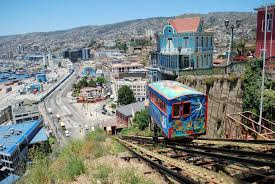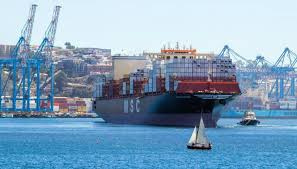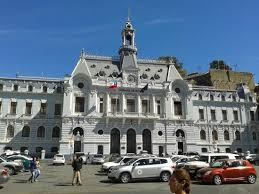How does Valparaíso’s geography influence its port operations?

How does Valparaíso’s geography influence its port operations?
How does Valparaíso’s geography influence its port operations? Valparaíso, perched on the rugged coastline of central Chile, is shaped by a distinctive geography that significantly influences its port operations.
The city’s unique physical characteristics create both opportunities and challenges for maritime activities. Here’s an exploration of how geography impacts Valparaíso’s port.
Natural Harbor
Valparaíso features a natural deep-water harbor, which is well-protected from harsh ocean winds and storms.
This advantageous location allows large vessels to dock safely, facilitating efficient loading and unloading of cargo.

Hilly Terrain
The city’s hilly terrain presents logistical challenges for transporting goods between the port and the city.
Steep streets and inclines require innovative transportation solutions, such as funiculars and elevators, to navigate the elevation differences.
Proximity to Trade Routes
Valparaíso is strategically located along major Pacific trade routes, making it a vital stop for international shipping.
Its position allows for convenient access to markets in North America, Europe, and Asia, enhancing its importance as a trade hub.
Climate Conditions
The coastal climate of Valparaíso, characterized by mild temperatures and seasonal rainfall, affects port operations.
Weather conditions can influence shipping schedules, with fog and storms occasionally disrupting maritime traffic.
Environmental Factors
The surrounding marine environment, including currents and tides, plays a critical role in port operations.
Understanding these factors is essential for navigating vessels safely and optimizing loading and unloading processes.
Accessibility to Inland Markets
Valparaíso’s geography provides access to the central Chilean region, which is rich in agricultural and mineral resources.
The port serves as a key export point for these goods, connecting local producers to global markets.
Urban Development and Infrastructure
The geography has influenced urban planning and infrastructure development around the port.
Efforts to enhance connectivity and transportation options are ongoing to accommodate the growing demands of maritime trade.
Tourism and Heritage
The scenic coastal landscape and historic architecture contribute to the tourism appeal of Valparaíso.
This dual focus on port operations and tourism creates opportunities for economic growth, leveraging the city’s natural beauty.
Vulnerability to Natural Disasters
Valparaíso’s geography also makes it vulnerable to earthquakes and tsunamis, which can impact port operations.
Preparedness and resilience strategies are essential to mitigate risks and ensure the safety of maritime activities.
Sustainability Efforts
The unique geography of Valparaíso has led to a growing focus on sustainable practices in port operations.
Initiatives to reduce environmental impacts and promote eco-friendly shipping practices are increasingly important for the future.
In summary, Valparaíso’s geography significantly influences its port operations, from its natural harbor and trade route accessibility to the challenges posed by its hilly terrain.
These geographic characteristics shape the logistics, infrastructure, and strategies employed in the port, ensuring that Valparaíso remains a vital maritime hub in the Pacific.
As the city continues to adapt to evolving economic demands and environmental considerations, its geographical features will play a crucial role in shaping the future of its port operations.





Leave a Reply